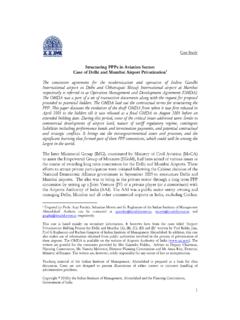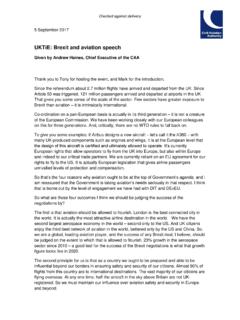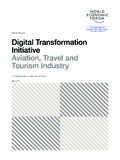Transcription of Unasylva: Forests in the Climate Change Agenda. …
1 Forests IN THE Climate Change AGENDAAn international journal of forestry and forest industriesVol. 67 2016/1246 ISSN 0041-6436 Joining forces to achieve SDG15: Delivering on the global agenda for Forests , Climate and developmentUN system side eventUNFCCC COP22 Marrakech, MoroccoBlue Zone, Arabian Room16 November 201618. 30 town hall discussion on REDD+ (reducing deforestation and forest degradation) and other land-use-related initiatives as powerful catalysts for delivering on SDG15 and achieving countries Nationally Determined ContributionsModerated by Matt Frei (Channel 4 News)Speakers will include Jos Graziano da Silva (FAO Director-General) and Erik Solheim (UNEP Executive Director), with an international panel of ministers and high-level representatives from Chad, Costa Rica, Fiji, Ghana, Indonesia, the United Kingdom and other agencies (UNDP and World Bank).
2 Editor: S. LapstunEditorial Advisory Board: S. Braatz, I. Buttoud, P. Csoka, L. Flejzor, T. Hofer, F. Kafeero, W. Kollert, S. Lapstun, D. Mollicone, D. Reeb, S. Rose, J. Tissari, P. van LieropEmeritus Advisers: J. Ball, Bourke, C. Palmberg-Lerche, L. RussoRegional Advisers: F. Bojang, P. Durst, Hamid, J. MezaUnasylva is published in English, French and Spanish. Subscriptions can be obtained by sending an e-mail to Subscription requests from institutions ( libraries, companies, organizations, universities) rather than individuals are preferred to make the journal accessible to more readers. All issues of Unasylva are available online free of charge at Comments and queries are welcome: encourages the use, reproduction and dissemination of material in this information product.
3 Except where otherwise indicated, material may be copied, downloaded and printed for private study, research and teaching purposes, or for use in non-commercial products or services, provided that appropriate acknowledgement of FAO as the source and copyright holder is given and that FAO s endorsement of users views, products or services is not implied in any designations employed and the presentation of material in this information product do not imply the expression of any opinion whatsoever on the part of the Food and Agriculture Organization of the United Nations (FAO) concerning the legal or development status of any country, territory, city or area or of its authorities, or concerning the delimitation of its frontiers or boundaries.
4 The mention of specific companies or products of manufacturers, whether or not these have been patented, does not imply that these have been endorsed or recommended by FAO in preference to others of a similar nature that are not FAO publications reviewed in Unasylva are available on the FAO website ( ) and can be purchased through 2P. Ive rs e nForests role in the Climate Change agenda 3A. Cattaneo and L. LipperIncorporating forest landscapes into Climate -smart agricultural strategies 12M. J. Sanz and J. Penman An overview of REDD+ 21M.
5 J. Sanz UN-REDD, the United Nations programme to reduce emissions from deforestation and forest degradation (2008 2015) 31G. Muir, J. Murray, E. Sartoretto, D. Hewitt, R. Simpson and J. FoxCoordinating Climate action: experiences from REDD+ and FLEGT Silori, K. Wiset, Poudyal and T. VuGrassroots facilitators as agents of Change for promoting sustainable forest management: lessons learned from REDD+ capacity development in Asia 45J. Bervoets, F. Boerstler, M. Dumas-Johansen, A. Thulstrup and Z. Xia Forests and access to energy in the context of Climate Change : the role of the woodfuel sector in selected INDCs in sub-Saharan Africa 53W.
6 A. Kurz, C. Smyth and T. Lempri re Climate Change mitigation through forest sector activities: principles, potential and priorities 61J. L ooForest genetic resources and adaptation to Climate Change 68C. O Donnell, J. Recharte and A. Taber Climate Change , mountain people and water resources the experiences of the Mountain Institute, Peru 75 FAO Forestry 81 World of Forestry 83 Books 85 Cover: Trees cling to the slopes of the Grand Canyon of the Yellowstone, United States of America Roy LuckAn international journal of forestry and forest industriesVol.
7 67 2016/1246 ISSN 0041-6436 EDITORIALA lmost one year has passed since the parties to the United Nations Framework Convention on Climate Change (UNFCCC) met in Paris and agreed to make a collec-tive endeavour to limit temperature increases to below 2 C. But between the intention and its realization lies a great deal of uncharted territory, and it is useful to map out what has already been accomplished. This issue of Unasylva comes just a few days after the Paris Agreement entered into force on 4 November 2016 and coincides with the 22nd Conference of the Parties of UNFCCC (COP 22), which will be decisive for the effective implementation of the articles cover a range of aspects relating to the role of Forests in the Climate Change agenda .
8 Together they provide a comprehensive overview, both for those already versed in the complexities of the issues and those who would like to gain a better grasp of them. Readers will be able to gain better insight into the background and status of ongoing Climate negotiations, the functioning of mechanisms and initiatives such as Reducing emissions from deforestation and forest degradation (REDD+), and where these stand in the international architecture. They will also discover several interesting and innovative success stories that point the way to some avenues for further introductory article, by Iversen, provides a snapshot of the main international agreements relating to Climate Change , the place of Forests within these agreements, and the obstacles that remain to be overcome.
9 Although the UNFCCC has long recognized Forests key role in Climate regulation, accurate and comparable monitoring and reporting are still a challenge. The second article, by Cattaneo and Lipper, identifies further challenges. Arguing that the drivers of deforestation and for-est degradation are often situated outside the forest sector, it highlights the need to look at land use through a broad lens and build the synergies between forestry and and Penman give a detailed account of REDD+, argu-ably the most important mitigation initiative involving Forests , and explain its role in providing a framework and guidance for countries to develop concrete action plans.
10 Sanz then looks specifically at UN-REDD, a multilateral programme that supports over 60 partner countries in meeting their REDD+ , Murray, Sartoretto, Hewitt, Simpson and Fox explore REDD+ from another angle, making a convincing case for strengthening its interlinkages with the European Union s forest Law Enforcement, Governance and Trade (FLEGT) initiative. Whereas REDD+ provides incentives to keep Forests stand-ing, FLEGT improves the functioning of the market for forest products by eliminating illegal timber. Viet Nam, Honduras and C te d Ivoire are examples of countries that are successfully developing synergies between the , Wisyet, Poudyal and Wu also share noteworthy examples of the application of REDD+ on the ground, looking at several Asian countries where efforts are being made to strengthen the capacities and the involvement of grassroots stakeholders, thereby improving turn, Bervoets, Boerstler, Dumas-Johansen, Thulstrup and Xia shed light on an important concern for many African coun-tries, namely woodfuel.

















